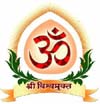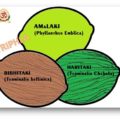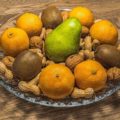Honey is a precious gift of nature to us as, it is full of energy, vitamins and minerals with many medicinal benefits.
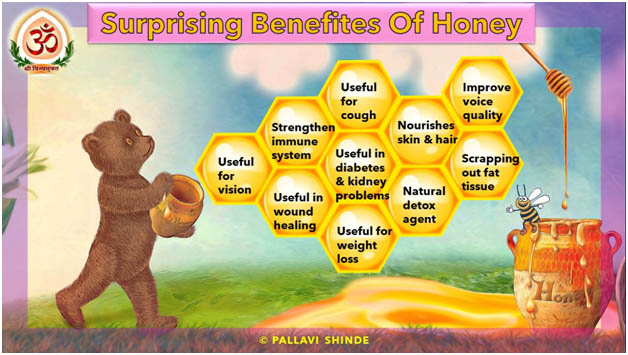
Beyond that honey has many anti-microbial and healing properties linked with it. Honey as the named “sweet” also known as “Madhu” in Ayurveda.
Honey is considered as a food and medicine as per Ayurveda, and is used for both internal and external applications.
But if you use it in wrong way it can harm you. Honey is very sweet, thick, liquid, varying in color from dark brown to light yellow. The sweetness and thickness depends upon the region.
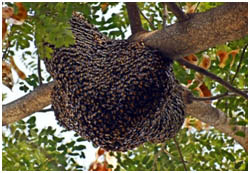
Table of Contents
What are the different names of honey in Ayurveda?
- Madhu
- Makshika
- Madvikam
- Pushparasolbhavam
- Kshudram
- Varadi
- Saradham
- Vantham
- Bringavantham
What is the taste of Honey as per Ayurveda?
Ras (taste): Madhura (sweet)Kashay (astringent)
Virya (potency): Ushna (hot) / some scholars define as a sheet ( cold)
Vipaka (post digestive effect): Madhura (sweet).
|| laghu-swadu-ruksha-grahi-vilekhanam ||
Guna :Laghu- light
Vishad-clear
Rooksha -dryness
Grahi – support / hold
Lekhanam – scraping
Effect on dosha :Balances kapha & pitta
चक्षुष्य छेदी त्रुटश्लेष्म विषहिदमास्त्रपित्तनूत |
मेहकुष्टकृमिछर्दिश्वासकासातीसारजित ||
व्रणशोधन संधान रोपण वातलम मधु ||
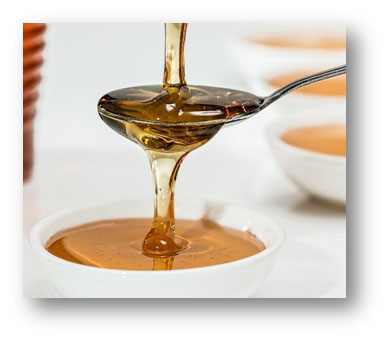
What are the benefits of honey?
- Useful in kapha disorders
- Useful in weight management
- Useful in eye disorders
- Useful in treatment of diabetes
- Useful in treatment of wounds and act as a wound healer
- Useful to treat worm infections
- Useful in cough, vomiting and rhinitis conditions.
- Useful in obesity
- Useful in digestion
- Useful in blood circulation & detoxification.
- Useful in hiccups
- Useful in asthma
- Useful in thirst
- Acts as a natural sleeping
- Natural remedy for dandruff
- Boosts memory
- Strengthens immune system
- Nourishes your skin and hair / softens the skin and hair
- Useful in sinus issues
- Useful in sore throat
- Prevents acne
- Useful in burns
What are the types of honey as per Ayurveda?
There are nearly 20,000 species of worker bees which can also be divided into 7-9 different species.
They can be found in all continents except, Antarctica.
MAKSHIKA – Honey collected by the red variety of honey bee – color of Til oil (sesame oil).
BHRAMARI – Honey collected from bramara type bee – white color
KSHUDRA – Honey collected from small bee – brown color
PAITTAKA – Honey collected from puttika type of bee- they are big in size – color like ghee
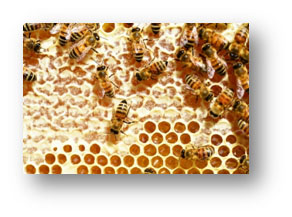
Which nutrients does honey contain?
Honey contains 20.06% water, 71.41 % of carbohydrates (in the form of two sugars – dextrose and levulose)
- 0.38 proteins
- Small quantity of formic acid
- All 22 amino acids
- Vitamins- A, B, C, D, E
- Calcium
- Magnesium
- Potassium
How is honey actually made?
The way worker bees are making honey is a big task. They are known as efficient pollinators.
Most bees gather only pollen or nectar. As she sucks the nectar from the flower, it is stored in her special honey stomach ready to be transferred to the honey – making bees in the hives.
If hungry she opens a valve in the nectar ‘sac’ and a portion of the payload passes through to her own stomach to be converted to energy for her own needs. Bee can carry a payload of nectar or pollen close to her own weight.
It is like an advance designed aircraft which takes off a load one quarter of its own weight and we will definitely appreciate the miracle that amazing honeybee can remain airborne with such a load on them.
When her nectar sac is full, the honeybee returns to their hives. Nectar is delivered to one of the door bees and is then passed mouth to mouth from bee to bee until its moisture content is reduce from about 70% to 20%.
This changes nectar into honey. Before the mouth to mouth transfer of the nectar sometimes it is stored at once in the cell. This is because the hive has a temperature of about 32.5 degrees Celsius which causes evaporation. Finally, the honey is placed in storage cell and capped with beeswax in readiness for the arrival of newborn baby bees.
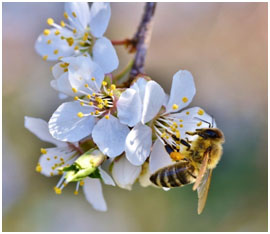
You will be surprised that in its whole life a single bee only produces about 1 ½ teaspoons of honey?
Worker bees have to fly 55000 miles to produce a pound of honey. And it takes about 556 for aging bees to visit 2 million flowers, to do so.
Why does honey differ in color?
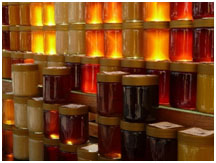
The color of honey is determined by the nectar collected by honey bees from flowers.
Color ranges from nearly colorless to dark brown.
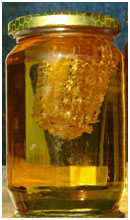
When should I consume honey?
- Early morning empty stomach with cold processed water (for e.g., boil 80ml water and reduce it to 10 ml only filter and cool it down. Let this water cool down totally then add 1 tsp honey into it and consume it.
- At night just 1 tsp honey for better sleep.
- With medicines prescribed by doctor for kapha or other respiratory disorder.
For Whom and when honey is not recommended?
- People who suffer from heat disorders
- In summer season
- With hot water or hot substance
- Diabetic people
- Indigestion.
- Equal quantity of ghee and honey.
- Equal quantity of sesame oil and honey.
Is it okay to eat honey at night?
Yes, you can take honey at night. Honey is good for sleep and restock your liver’s glycogen.
Does honey expire?
- If stored properly honey can stay longer than 2 years.
- Old honey which is more than 1-2 years in Ayurveda is called ‘‘Purana Madhu’’.
- Old honey has following benefits :
Grahi – Absorbent, useful in IBS and diarrhea
Lekhan – Scraping (useful in balancing kapha and respiratory organ)
Rooksha – dry
Kashay – astringent
Balances all the tridoshas, mainly kapha
Indication – Sthoulya ,medorog(obesity)
How you can identify pure honey?
- It will not spread quickly when put into water.
- Settled down at the bottle when put into water
- Burn nicely if it does not contain saliva or water
This video demonstrates the “honey purity” test in detail
Why some honey smells bad?
If your honey smells like vinegar it means it’s fermented. Honey contains yeast cells. Honey has more than 19% water, yeast cell divide & fermentation occurs. This happens when beekeeper harvests honey too early.
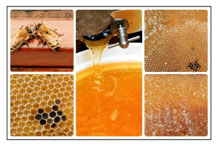
What is the smell of pure honey?
- Pure Honey: You can actually smell aromas mild scent of the flower from which the nectar was collected.
- Fake Honey: Industrial smell.
Can honey cause food poisoning?
In very few cases raw honey contains spore forming bacterium, clostridium botulinum, that causes intestinal botulism which mainly affect children less than a year old.
American academy of pediatrician suggests avoid honey in children’s below 1 year of age, due to the threat of botulism.
So always buy honey from a reliable source. People who are allergic to pollens or with seasonal allergies are not recommended to eat raw honey.
How much honey should I eat in a day?
- Not more than 6 teaspoon (36 gram) per day.
- A teaspoon of honey contains almost 5-gram sugar.
What can you do with old honey?
This is called Puran Madhu in Ayurveda. The honey which is 1 year old or more than that called Puran Madhu which is:
- Kashay : Astringent
- Rooksha: Dry
- Grahi : Useful in diarrhea, IBS
- Balance all the three dosha, mainly kapha.
- Lekhana : scraping property, useful in cholesterol, obesity, balance kapha and all its related disorder.
- Sthoulyahar / medohar : Useful in obesity.
If your honey is crystallizing, you can place the container in warm water for some time and stir the honey until the crystals dissolve.
Is drinking honey with hot water good?
As per Ayurveda honey is not recommended with hot water.
उष्णविरुद्धते सर्व विषान्वयतया मधू |
उष्णर्तमउष्नेर उष्णेवा यंनिहंति यथा विषम ||
तत सुकुमार्यच तथेव शैत्यान्न औषधीना रससंभवा च |
——सुश्रुत सू.. मधूवर्ग 144-145
Honey kills if you used after heating it, & by those suffering from great heat, used during hot season, hot country or with hot food.
Does honey have side effect?
|| ushnam-ushnartam-ushnechyuktamch ushna nirhanti tat ||
There are no side effects of honey but diabetic patients should be careful while consuming it and be careful that you are purchasing the pure quality of honey.
When it is taken with hot water in hot season or if you heat honey, it will surely affect your system.
Is honey heating or cooling?
Some scholars of Ayurveda explain that the honey is hot in potency but some say it’s cool in potency.
Honey is good for which dosha in Ayurveda?
वाते पित्ते श्लेष्म शांन्तो च पथ्यम |
तैलम सर्पि मक्षिकम च क्रमेण || ___वागभट उ.40/86
| Dosha | Useful Substance |
| Vata | Oil (Tailam) |
| Pitta | Ghee (Sarpi) |
| Kapha | Honey (Makshikam) |
Honey is ideal for kapha dosha.
Honey is good for balancing kapha and pitta.
Is honey compatible with food substances like ghee and milk?
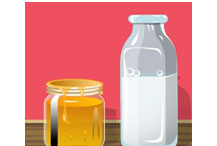
As per Ayurveda equal quantity of honey and ghee is poison.
Because both are different in their potency, ghee is cooling and honey is heating even they have different post digestive effects.
However different quantity like 1 part ghee with 2 part honey or vise a versa is not toxic and the reason is Prabhav being unexplainable.
This is the same with milk. If you want to add honey into milk try to add it into cold milk to avoid the toxic formation.
Is it good to heat honey?
- Cooked honey cloggs the system and becomes toxic so never cook or bake honey. Keep it away from fire.
- When honey comes in contact with fire it releases the toxins called “HYDRO METHYL FURFURALDYDE”(HMF).
- Also heating honey alters it’s other contents including increasing its peroxides.
- Heating honey is difficult to digest and starts to affect your gut flora.
- It clogs the channels of the body which produces intoxification and produce Ama.
Does honey boost immunity?
- Honey activates immune response to the cell.
- Honey increases T and B lymphocytes, antibodies, eosinophils, monocytes, and NK cells generation during primary and secondary immune responses in tissue culture.
- Honey also has anti-inflammatory and anti-oxidant property.
- Honey also has antimicrobial activity.
What diseases can honey cure?
|
Disease / Symptoms |
How To Use Honey |
Ideal Time |
| Asthma | Honey with ginger juice + Clove+ Cinnamon+ Tulsi leaves+ Cardamom + Black raisins + Black pepper. | Every after 2-3 hours |
| Eye Disorders | Honey(1tsp) + Ghee (1/2 tsp) + Trifala powder (1tsp) | At night |
| Coughing | Honey with ginger powder | After lunch or at night |
| Weight Loss | Honey with cold or room temperature water | Empty stomach in the morning |
| Indigestion or Acidity | Honey with ginger juice / lemon with water | Morning or after your lunch |
| Wound Healing | Externally applied on wound | Any time of the day twice or thrice |
| Diabetes | Honey mixed with a pinch of powdered seeds of Gossypium herbaceum. | Twice a day |
| ACNE or Pimples | External application : Honey with Arjun powder | Twice a day |
| Dry Hair / Dandruff | External application : Honey + Lemon juice + Awla powder | Thrice a week |
| Sore Throat | Honey with ginger juice and clove powder | Twice a day after meal |
| Weakness / Lethargy | Honey with pomegranate juice | For breakfast once a day |
| Bad Breath | Cinnamon powder mixed with honey and water. Hold in mouth or gargle | Twice a day |
| Hypertension | Honey with garlic juice | Once a day |
| Burns | Externally | Direct application trice a day |
| Cracked Lips | Honey with ghee with beetroot juice | Apply externally |
| Skin Moisturizer | Honey + Milk + Rose water + Sandal powder | Externally once |
| Facial Scrubber | Honey + Almond powder + Sandal powder | Externally scrub and wash it off |
| Natural hair Remover | Honey + Chickpeas flour + Milk | Externally apply rub and wash it off |
Honey is a magical, most valued and nature’s gift for us.
Lots of Ayurveda medicines are made with the help of honey. As we saw honey is a multipurpose substance for mankind.
Hope this sweet article makes you smile and shine like honey. We are always welcome for more queries and suggestions. Thanking you all.
Written By…
|
Dr. Pallavi Shinde is the director at Shree Vishwamukta Yog, Ayurved and Panchakarma Clinic at Pune, India. She always uses ayurvedic proprietary formulations for many chronic health diseases & many products for Skin Diseases & beauty products. She is a hardcore Researcher, Practitioner, Promoter of Ayurveda. Contact today to book an appointment. |
